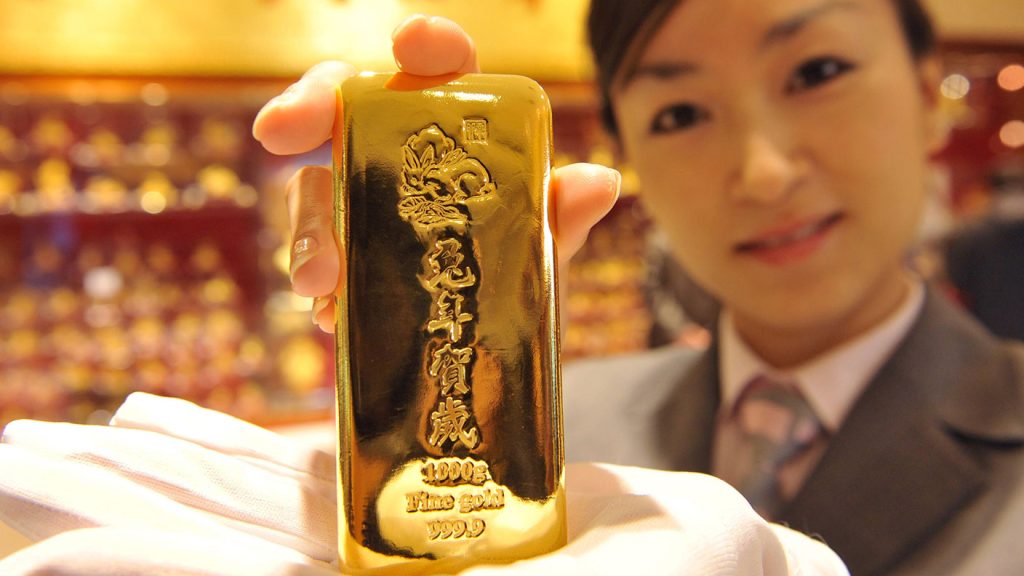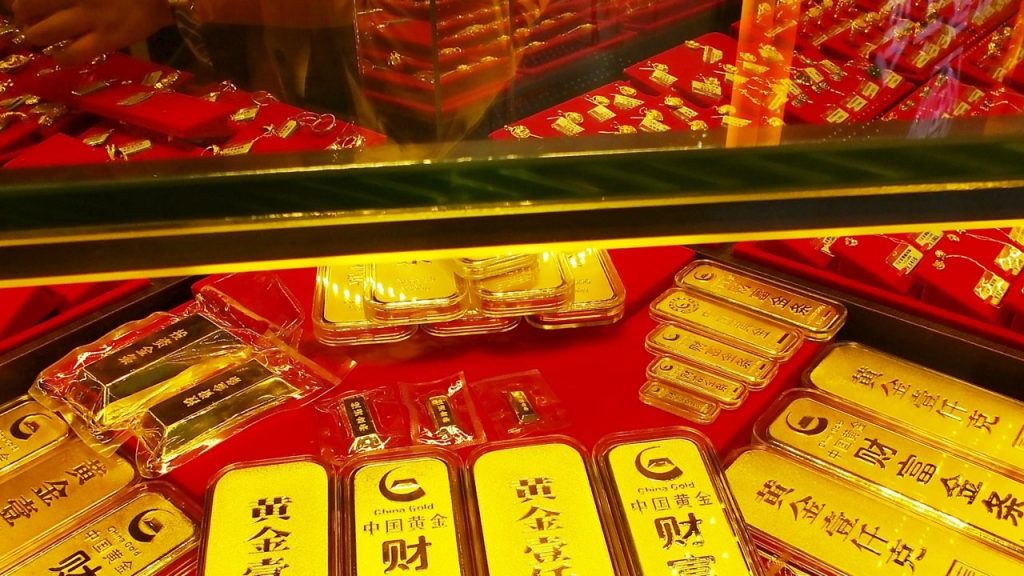Chinese people have started a gold rush as property crashes. Sales of gold, silver, and jewellery have been brisk for months, defying wobbles in the Chinese economy centred around the protracted crisis in the property market.
After months of stagnation, the gold market sprung to life on March 1. Prices broke the December record on Tuesday and have been rising steadily since then. On Friday, spot gold in New York rose to a fresh high of $2,185.19 per ounce.
The rally was unusual: gold typically rises in response to world-changing geopolitical or economic events, and nothing particularly important had occurred to warrant the jump. The sudden rise has left many experts and other market watchers looking for explanations, ranging from huge investment funds renewing their interest in gold to the influence of algorithmic traders following market trends, fueling volatility.
However, prices didn’t have far to go before reaching record levels. Gold has been trading for months around $2,000, a number that would have been considered astronomical just a few years ago and was only broken for the first time in 2020 as the global epidemic raged.
Even more surprisingly, prices have remained high despite sky-high real interest rates, which are traditionally detrimental to gold, which does not pay interest.
While many Western investors sold gold as interest rates rose last year, worldwide demand was supported by significant purchases by central banks in emerging market countries, led by China.
Regular people are also buying – despite the high prices, Chinese consumers stockpile coins, bars, and jewellery to protect their wealth against volatility in the country’s stock market and property industry.
“Western investors have not driven the gold market,” said Bernard Dahdah, a commodity analyst at Natixis. “China, so far this year and through last year, has been the engine behind gold prices — but not necessarily behind this spike.”
While Chinese and other developing market buying helped set this week’s milestones, the focus has shifted to investors and their predictions about when the Fed will begin decreasing interest rates.
The initial increase on March 1 followed weak US industrial statistics and a decline in consumer mood, which looked to support the case for reduction. Fed Chairman Jerome Powell’s comments emphasizing the probability of a cut this year fueled additional gains, helping to boost prices to new highs.
Fresh data from the Commodity Futures Trading Commission on Friday indicated that money managers were buying aggressively during the week through March 5 — when gold broke its previous high.
However, bullion has a long way to go before reaching its inflation-adjusted peak. Gold has increased by more than 600% since the start of the millennium, but adjusted for inflation, it remains below the peak of $850 reached in January 1980, which is equivalent to more than $3,000 in today’s currency.
This week’s high bears some similarities to that peak 44 years ago. Bullion’s value more than doubled in 1979, as the toppling of Iran’s Shah and the Soviet invasion of Afghanistan underlined the precious metal’s importance as a haven asset. This year, Iran-backed Houthi attacks on Red Sea ships have raised geopolitical concerns, as has Russia’s ongoing conflict in Ukraine.
“The sabre-rattling from Putin, the conflict in Ukraine and Gaza, all of that adds to the background noise,” said Adrian Ash, director of research at BullionVault. “The mood music is bullish for gold now from the safe-haven perspective.”
However, recent gains have been very modest compared to previous record-setting rallies. This is due, in part, to central banks’ efforts to diversify their reserves away from reliance on the US currency.
Central bank demand “puts a buffer on gold,” said Max Belmont, portfolio manager for the First Eagle Gold Fund, which had $2.3 billion in assets under management at the end of 2023. “And it’s not the western central banks that are accumulating, it’s the eastern,” he said, with China projected to be the major buyer by 2023.
If Chinese purchases have been a gold market pillar, Fed policy will likely remain the primary market mover. Signs of a shift toward lower interest rates have underpinned gold since mid-February, with traders currently pricing in a 67% chance of a rate decrease in June. Lower borrowing costs generally benefit gold, which pays no interest to its holder.
In the short run, some investors may choose to cash in on recent profits, putting pressure on prices, according to Ash.
However, the broader backdrop suggests the rally may have further to go. Despite the obvious similarities between the recent record-breaking run and other gold peaks, the participation of central banks and Asian buying distinguishes it.
“The current market behavior, characterized by daily record highs, is unprecedented in my experience,” said Alexander Zumpfe, senior trader of the German gold refiner Heraeus Group. “This uniqueness underscores the complexity of the current market dynamics and the variety of factors influencing gold prices.”
Source: Bloomberg
Despite Gold’s Highs, Wall Street Thinks It Has Further To Go
Despite Gold’s Highs, Wall Street Thinks It Has Further To Go







